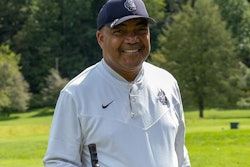Tom Wolfe, the influential writer whose unconventional, exuberant prose laid the foundation for so-called New Journalism and fueled his best-sellers The Right Stuff and The Bonfire of the Vanities, has died. He was 88.
Lynn Nesbit, Wolfe’s agent, told the Associated Press that Wolfe died of an infection Monday in a hospital in Manhattan.
Wolfe’s most famous works include the landmark 1968 nonfiction book The Electric Kool-Aid Acid Test, which chronicles the LSD-enhanced odyssey that author Ken Kesey and his Merry Pranksters took aboard the wildly colored school bus named Further — a journey that began at Kesey’s log house in La Honda in San Mateo County.
Among Wolfe’s later books are the meaty, 700-page-plus novels A Man in Full (1998), I Am Charlotte Simmons (2004) and Back to Blood (2012).
Both The Bonfire of the Vanities (1987) and The Right Stuff (1979), a National Book Award winner, were adapted into movies. The former, a hugely successful novel that offered a sweeping, satirical take on New York City in the go-go 1980s, was a flop at the box office; the latter, about the pilots who became NASA astronauts, earned eight Academy Award nominations.
A semi-professional baseball pitcher who tried out with the New York Giants, Wolfe started his writing career as a reporter for the Springfield Union in Massachusetts and then the Washington Post, serving as its Latin America correspondent.
In 1962, he landed a job as a general assignment reporter and features writer at the now-defunct New York Herald Tribune and at New York magazine (at the time the Herald Tribune’s Sunday supplement). There, he honed the writing style that would come to be known as New Journalism. The genre, which Wolfe championed in the 1973 anthology The New Journalism, emphasized a subjective, less impersonal and more free-flowing style of writing. Others who contributed to that collection included Truman Capote, Joan Didion and Hunter S. Thompson.
While at the Herald Tribune, Wolfe published The Kandy-Kolored Tangerine-Flake Streamline Baby (1965), a wildly popular collection of essays about 1960s culture that landed him on best-seller lists.
“I used to write like the rest of you only not as well,” Wolfe told Chronicle columnist Herb Caen during a visit to San Francisco in 1965. Caen described the author as “a nice, gracious young fellow with his long blond hair plastered to the side of his head.”
Wolfe began writing in his signature style by accident, he told Caen: “Esquire wanted me to do a piece on custom cars and I couldn’t do it so I wrote this long memo to the editor explaining why and I just let myself go … varoom … with rock ’n’ roll music on the radio, just scribbling away, and they printed it that way. Tom Wolfe style! I don’t know what it is myself. I’ve been parodied ten times already — you’ll probably make it 11 — and if I don’t watch out, I’ll be writing parodies of myself.”
Wolfe’s sartorial style was no less distinctive. His long-standing writerly uniform, a sort of Southern dandy chic, consisted of a cream-colored suit, a high collar, white spats and white-rimmed glasses. His lifestyle was no less posh: He lived in a 12-room apartment on the tony Upper East Side of Manhattan, where he wrote on a typewriter.
Wolfe’s early fame grew with the publication of The Electric Kool-Aid Acid Test in 1968. Novelist Herbert Gold, who lives in San Francisco, remembers Wolfe looking him up when staying in the city in the ’60s.
“In a way, I introduced him to the counterculture,” Gold said. “I was writing about it very early on in the New York Times. … He wanted to get to know Ken Kesey and members of the Grateful Dead. Tom was very, very turned on by it. He was excited about it.”
Wavy Gravy, the entertainer and activist who lives in Berkeley, spent time with the author when he was researching The Electric Kool-Aid Acid Test.
“He had this tab of acid on his bureau and he kept asking me, ‘Should I take it?’ He would look at it and he would actually perspire. But he never did take it.
“Tom was a genius writer and he did deep research,” Gravy added, “but when he wrote The Electric Kool-Aid Acid Test, he maintained that I was the one who put the acid in the Kool-Aid, in Watts, and it was not true. I coined the phrase ‘Electric Kool-Aid,’ but I did not put it in the punch. I still have moms beating me over the head with umbrellas because there were like 20 people committed for that night. They all blamed me.”
Philip Kaufman, the San Francisco filmmaker who directed the adaptation of The Right Stuff, also wrote the screenplay for the 1983 film.
“The book was such a great piece of writing that in a way it could not be put into a film,” Kaufman said. “He was going for a spirit of something that maybe all people have in common. That ineffable quality that can’t even be mentioned. It took me five years to make the movie.
“Tom saw it at a private screening,” Kaufman added. “There is a scene where Sam Shepard (as Chuck Yeager) is arriving by horseback in the high desert like a cowboy in a leather jacket. He sees this small test airplane sitting alone in the desert being fueled. Everyone who has tried to ride this plane has died, and now he is looking at this plane, the bronco that can’t be broken. It is, in a way, the meeting of the Western in the movies with the future.
“When Tom saw this he just started applauding, I am told. When the movie was over, he asked if he could see it again right now, all the way through. He loved it.”
Wolfe’s other books included The Pump House Gang (1968), Radical Chic & Mau-Mauing the Flak Catchers (1970), In Our Time (1980) and From Bauhaus to Our House (1981). He was awarded the National Humanities Medal by President George W. Bush in 2001.
Not all were taken by Wolfe’s bold, irrepressible writing style, noted for its heavy use of exclamation points and ellipses. John Updike dismissed A Man in Full, set in Atlanta and the East Bay, as “entertainment not literature.” Fanning the flames of what became a literary feud, John Irving belittled Wolfe’s fiction as “pompous, puerile and laughable.”
Wolfe described his approach to writing in an interview with The Chronicle’s Paul Wilner in 2004: “When I see something occur that might be repulsive to me, my reaction is not one of repulsion. My reaction is, ‘I can use that.’ That’s good. It’s a happy feeling. Every reporter knows that, in those too-rare moments when we know we are getting something. I call it egotistical objectivity.”
Wolfe is survived by his wife, Sheila, a designer for Harper’s Magazine, and two children, Alexandra and Tommy.





















